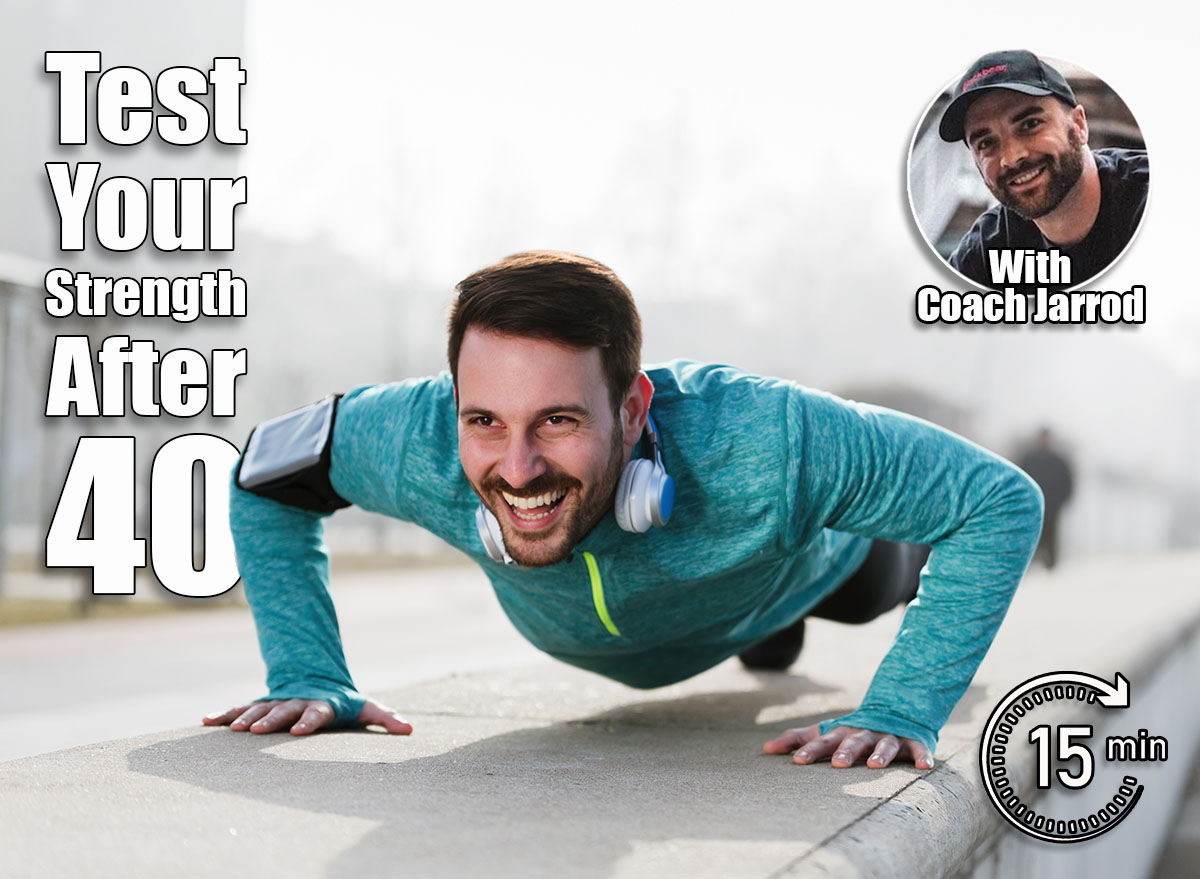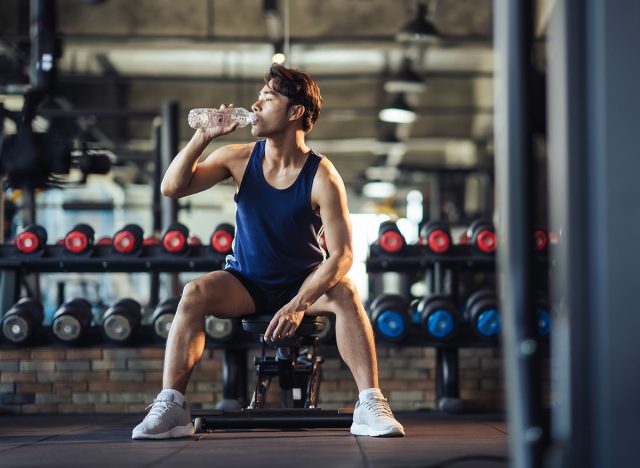6 Bodyweight Tests That Reveal Your Real Strength After 40

Once you’re past 40, strength has a new definition. It’s no longer just about moving heavy weights in the gym. Instead, real strength is measured by how well you control your own body in space. Adequate control shows whether you’ve kept your balance, mobility, and muscular endurance—all qualities that become even more important as the years stack up.
Bodyweight tests are a powerful way to assess your fitness. They cut through the noise of gym numbers and reveal whether your body can handle the challenges of daily life. The ability to push, pull, balance, and stabilize with only your bodyweight is a true sign of functional strength and athletic longevity.
These tests give you measurable standards you can improve upon. Each one shows where your strength is thriving and where you could use some extra focus. Passing them with confidence proves you’ve kept your edge past 40 and set yourself up for decades of movement without limits.
Below are six bodyweight tests worth trying. Each includes standards for beginner, intermediate, and advanced levels so you’ll know exactly where you stand—and how to raise the bar.
6 Bodyweight Tests To Measure Strength After 40
Push-Ups
Push-ups are the gold standard for upper-body strength and muscular endurance. They challenge your chest, shoulders, triceps, and core while testing your ability to stabilize your spine under tension. After 40, push-ups also reveal whether you’ve maintained healthy shoulder mobility and pressing power, which are essential for activities ranging from carrying groceries to maintaining good posture.
Muscles Trained: chest, shoulders, triceps, core
How to Do It:
- Start in a high plank with your hands under your shoulders.
- Keep your body straight from head to heels.
- Lower your chest until it’s just above the floor.
- Press back up until your arms are straight.
- Continue for as many quality reps as possible.
Scoring Standards:
- Beginner: 8 to 12 reps
- Intermediate: 15 to 20 reps
- Advanced: 25+ reps
Form Tip: Keep your elbows tucked at about 45 degrees to your torso. This protects your shoulders and builds more power.
Wall Sit Hold
The wall sit reveals lower body strength, endurance, and mental grit. Holding your body in place at a 90-degree knee bend fires up your quads, glutes, and core. This test shows whether your legs can sustain tension under load, which is directly relevant to climbing stairs, walking hills, and maintaining athletic movement later in life.
Muscles Trained: quadriceps, glutes, hamstrings, calves, core
How to Do It:
- Stand with your back against a wall.
- Slide down until your knees are bent at a 90-degree angle.
- Keep your heels directly below your knees.
- Flatten your back against the wall and brace your core.
- Hold until your form breaks.
Scoring Standards:
- Beginner: 30 to 45 seconds
- Intermediate: 60 to 90 seconds
- Advanced: 2+ minutes
Form Tip: Press your heels into the floor and avoid resting your hands on your thighs to keep the tension in your legs.
Plank
Core stability is the foundation of strength after the age of 40. The plank measures your ability to hold a neutral spine and resist fatigue through your abdominals, obliques, glutes, and shoulders. A strong plank translates to safer lifting, better posture, and improved performance in nearly every athletic movement. If you’re feeling strong in the traditional plank, measure yourself using the side plank!
Muscles Trained: rectus abdominis, obliques, transverse abdominis, glutes, shoulders
How to Do It:
- Get into a forearm plank with elbows under shoulders.
- Keep your body in a straight line from shoulders to ankles.
- Pull your belly button toward your spine.
- Squeeze your glutes and quads for tension.
- Hold without sagging or piking.
Scoring Standards:
- Beginner: 45 seconds
- Intermediate: 90 seconds
- Advanced: 2+ minutes
Form Tip: Imagine you’re pulling your elbows toward your toes. This activates more core tension and keeps your body rigid.
Single-Leg Sit-to-Stand
Balance and unilateral strength decline quickly with age if left untrained. This test shows whether you can rely on one leg to control your body through a full range of motion. It develops coordination, stability, and mobility in the hips and knees—all essential for maintaining strength and preventing falls as you age.
Muscles Trained: quadriceps, glutes, hamstrings, calves, core
How to Do It:
- Sit on a chair with one foot firmly on the ground.
- Extend your other leg in front of you.
- Cross your arms over your chest.
- Drive through the planted foot to stand tall.
- Lower back down with control.
Scoring Standards:
- Beginner: 1 to 2 reps per leg
- Intermediate: 5 to 6 reps per leg
- Advanced: 10 reps per leg
Form Tip: Keep your chest tall and avoid leaning too far forward. This ensures the work comes from your legs, not momentum.
Hanging Knee Raise
Hanging knee raises combine grip strength and core control. Being able to stabilize while hanging and lifting your knees demonstrates that you have both the midsection endurance and the upper body support necessary for long-term strength. Grip capacity is vital after 40, as it is closely linked to overall health and longevity.
Muscles Trained: forearms, lats, biceps, rectus abdominis, hip flexors
How to Do It:
- Hang from a pull-up bar with arms straight.
- Pull your shoulders down and back.
- Brace your core and raise your knees to hip height.
- Lower them with control.
- Avoid swinging or using momentum.
Scoring Standards:
- Beginner: 4 to 6 reps
- Intermediate: 8 to 10 reps
- Advanced: 15+ reps
Form Tip: Think about pulling your knees toward your chest rather than just up. This engages your abs more and keeps you from swinging.
Inverted Row
The inverted row balances out the pressing strength of push-ups by testing your ability to pull. Strong back muscles are key for posture, shoulder health, and overall upper body symmetry. This test challenges your lats, rhomboids, and grip strength while proving your pulling capacity is up to par.
Muscles Trained: lats, rhomboids, biceps, rear deltoids, forearms, core
How to Do It:
- Position yourself under a sturdy bar or suspension trainer.
- Grab the bar with a shoulder-width grip, using an overhand grip.
- Keep your body straight from head to heels.
- Pull your chest to the bar.
- Lower under control until arms are straight.
Scoring Standards:
- Beginner: 6 to 8 reps
- Intermediate: 10 to 12 reps
- Advanced: 15+ reps
Form Tip: Keep your chest lifted and avoid shrugging your shoulders. This ensures you’re targeting your back muscles instead of your traps.
The Best Strength Tips for Staying Strong After 40

Strength doesn’t fade overnight, but maintaining it requires consistent attention after 40. These strategies will help you keep progressing and crush the standards above:
- Train bodyweight basics weekly to build consistency.
- Include mobility and stretching to protect your joints.
- Focus on quality reps instead of chasing numbers.
- Balance pushing and pulling to protect your shoulders.
- Retest every 2–3 months to track progress.
Passing these six bodyweight tests proves you’re functionally fit and ready for the demands of everyday life.
Looking for more easy ways to lose fat? Here’s How Long Your Walking Workout Should Be To Shrink Belly Fat.
References:
- Bohannon, Richard W. “Grip Strength: An Indispensable Biomarker For Older Adults.” Clinical interventions in aging vol. 14 1681-1691. 1 Oct. 2019, doi:10.2147/CIA.S194543